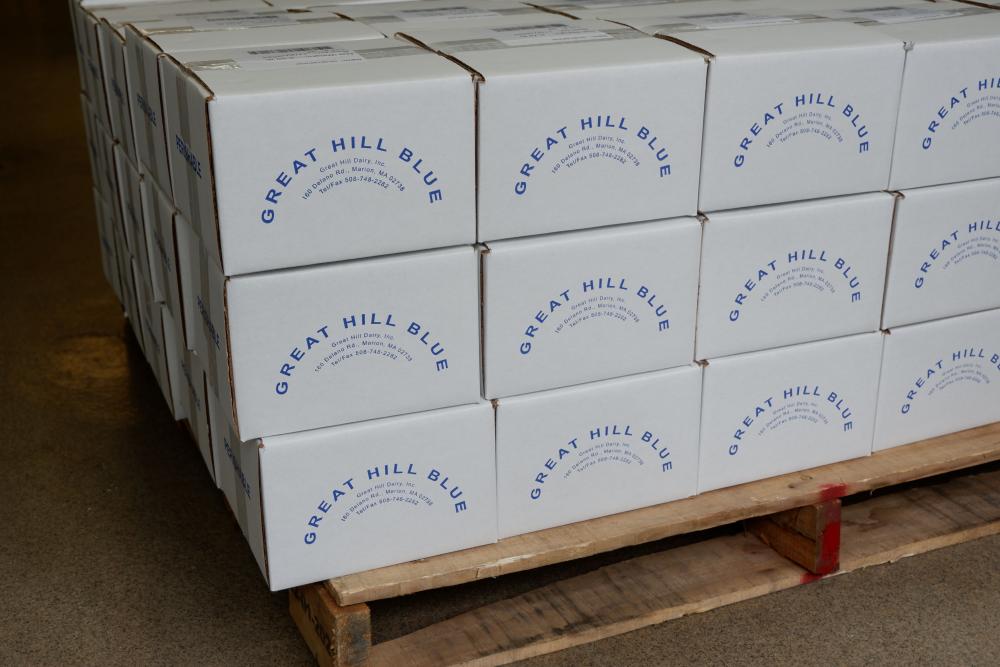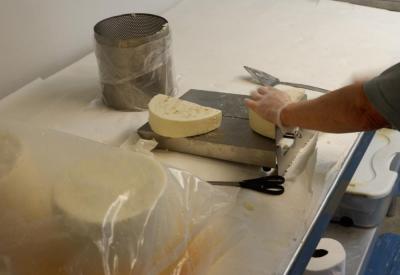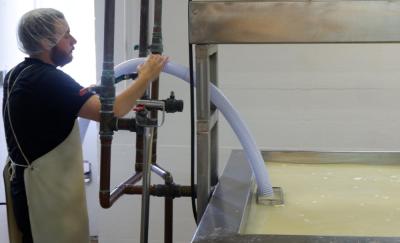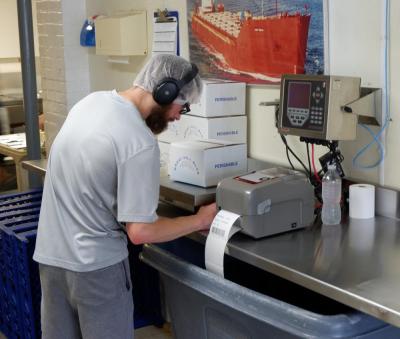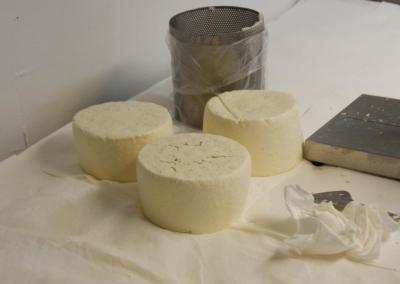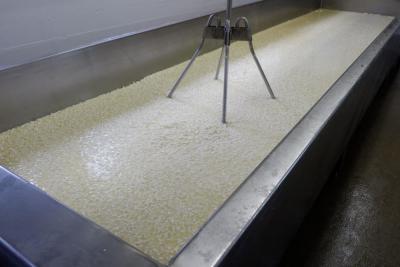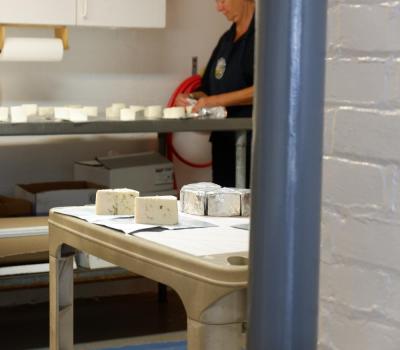Blue cheese business booming in Marion
MARION — Every week, 600 six-pound wheels of blue cheese are made and packaged at Great Hill Farm, tucked away in the woods off of Delano Road in Marion.
The farm includes Great Hill Dairy, a business that has been making and distributing blue cheese since 1991.
Tim Stone, owner of Great Hill Dairy, studied government at the University of Colorado before “quickly realizing that wasn’t what he wanted to do.” Stone decided to return to Marion and put his family farm to good use.
When researching what he could produce on the farm, Stone noticed that there was a lack of blue cheese distributors east of the Mississippi River.
“I can see why, because it is very difficult,” said Stone. “There are so many steps in terms of the cleaning, being aware of the moisture of the cheese and small details like that.”
Thirty-three years later, Great Hill Dairy’s blue cheese has expanded from being sold in local markets and restaurants to large chains like Whole Foods.
Stone believes that attention to detail has taken the business to where it is today.
“There are so many steps in terms of the cleaning, being aware of the moisture of the cheese and small details like that,” said Stone.
Every Monday, around 200 six-pound wheels of blue cheese are made by Stone and his staff of less than 10 employees. Another batch of 200 wheels each are produced Tuesday and Wednesday too.
According to Brian Petitpas, head cheesemaker at Great Hill Dairy, the process of making the cheese starts with slowly heating up milk purchased from local farms.
Once upon a time Great Hill Farm was the home of cows. Today, fresh milk arrives at the farm every Sunday.
As the milk heats up in a large tank, cultures and liquid mold are added in. The “blue” in blue cheese refers to a safe-to-eat mold that gives the cheese its distinct flavor and appearance.
Mechanical paddles constantly stir the mixture. Petitpas said that this is the only part of the process that is done using machinery. Everything else is done by hand.
When the mixture reaches 90 degrees, its acidity is measured.
“When we reach a certain acidity, we add rennet,” said Petitpas. Rennet, a type of enzyme found in the stomach lining of unweaned mammals, helps form the cheese curd.
Stirring, draining and salting follows before the cheese is stored on site for over five months, eventually making its way to restaurants and grocery stores.
Thursdays at Great Hill Farm are strictly for cleaning.
“I think a lot of people have this notion that cheese making is artistic and romantic…the most challenging thing is the clean up,” said Stone. “We spend much more time cleaning than we do making the cheese.”
Petitpas said that the clean-up is so important not only because food is being manufactured , but also because blue cheese comes out best when it is produced using sparkling-clean equipment.
The week ends on Friday as the cheese is punctured to allow oxygen in, which allows the mold in the cheese “to breathe” according to Petitpas.
According to Stone, different milk has variable effects on the cheese.
“Every batch is a little different,” he said. “It’s not like you are making ‘the standard thing.’ It’s not the same thing every day.”
Stone added that the process is ever-changing and not quite set in stone, with different weather, temperatures and seasons affecting the process.
“The amazing thing is I think we are still learning,” he said. “The cheese curd has a life of its own.”



